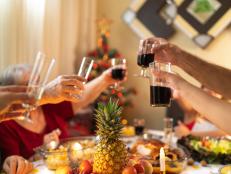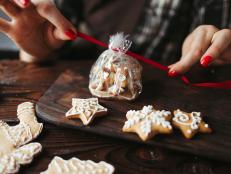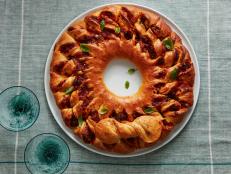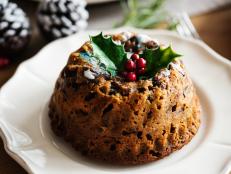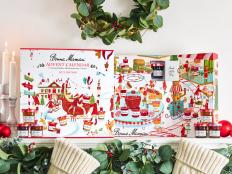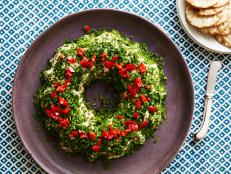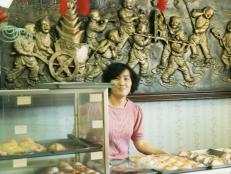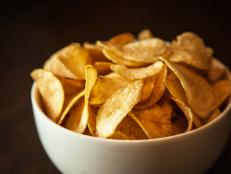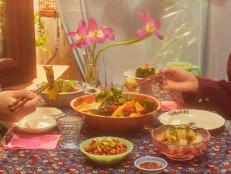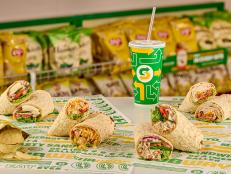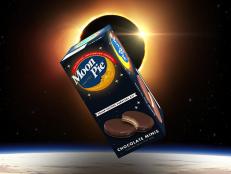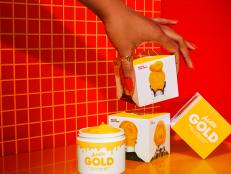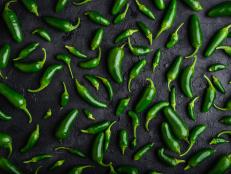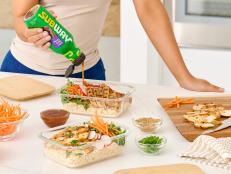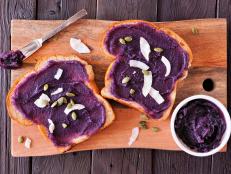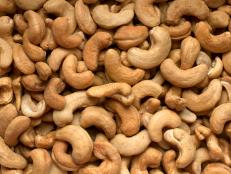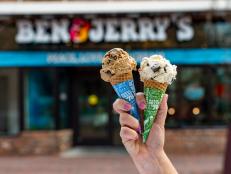My Family’s Christmas Hallacas Tell Our Venezuelan Story
A story about celebration, growth, reflection — and the triumph of the two plums.

Larisa Alvarez
It’s been complicated, to say the least. I don’t know many kids who jump at the opportunity of eating doughy masa filled with countless combinations of flavors, including capers, olives, almonds, raisins and dried fruit. My sister and I were no different. Additionally, even if the flavors had not been questionable in my eight-year-old mind, hallacas represented everything that my family had left behind in Venezuela. In order for this to make sense, we need to discuss what hallacas are.
Hallacas, at their core, are made up of two main components: a meat-y stew and a masa made with arepa flour. The masa gets flattened, the stew gets spooned onto the center and topped with garnishes like the ones listed above. The masa gets folded to encompass the savory mixture, wrapped and tied in plantain leaves, then boiled. (You can find my full recipe here.)
Most Venezuelan families come together to make their hallaca recipe in early December. Both sides of my family make hundreds at a time. We eat them throughout the holiday season, but most importantly, we eat them for dinner on Christmas Eve, Christmas Day and New Year’s Eve.

Larisa Alvarez
Each family recipe is distinct, based on both region and tradition. My family’s hallacas contain the same garnishes that my Abuela Josefina used, but the base of the stew is flavored with my Abuela Chabe’s seasoning. I have been running a failed campaign for five Christmases now to get the Alvarezes to give chorizo a chance in the hallacas — not as the star, just as a supporting actor! My mother’s stance, which I am still hopeful will change, is "over my dead body." However, I did succeed in convincing her to let me add a second plum, a victory that only took two Christmases.
My earliest holiday memory and my earliest hallaca-making memory are one in the same. I remember my Abuela Josefina’s house packed with extended family members, each moving chairs under any surface where they could contribute to the assembly process. Hallacas are a big undertaking, so everyone has a job on the assembly line. Some make masa all day and others wipe down and cut plantain leaves. There are stew scoopers, stew garnishers, wrappers and my favorite job: tyers. There are cold drinks being passed around, there’s Venezuelan Christmas music playing (gaitas), a lot of half-walking/half-dancing, and it is LOUD. It is a day full of celebration, holidays and family. I loved it.

Larisa Alvarez
We moved to the States so that my dad could get his MBA and so that my sister and I could learn English. There were many years where we didn’t make hallacas. It’s a lot to ask of four people, especially when two are under eight years of age. My parents were trying to figure out how to adapt to a foreign country, my dad was learning to speak the language while getting an MBA, and my mother, an electrical engineer and MBA recipient, was trying to raise two daughters who were always angry about leaving home.
Many of us are familiar with how immigrant lunch boxes work: you like what is in your lunch box, but it is very different than what the majority of your young classmates are eating. This makes you different as well, and grade schoolers aren’t known for being an understanding group. I was very aware that I was different, and I wanted nothing to do with it. When my parents insisted that we speak Spanish at home so that we didn’t lose our bilinguality, I threw fits. When my mom insisted on us eating arepas every weekend, I would say that I wanted to eat American food. Hallacas were out of the question.

Larisa Alvarez
We started making them every couple of Christmases when we would see extended family. I found them to be labor-intensive and annoying, as they would take adult attention away from me. Once I got older and we started making them just the four of us, the feeling shifted from annoyance to loneliness. I knew that our large and loud families were having the hallaca-making parties that I remembered, but thousands of miles away from us.
That feeling of loneliness was nothing compared to what I felt during the holidays after my sister passed away. My holiday wingwoman was gone, and I was desperate for the house to feel full and busy; hallaca-making allowed for just that. I also started thinking, as I imagine many others do, what would happen if I lost more family members. The idea of losing family without learning about our culture terrified me, so I became a student of Venezuelan culture — and a student of hallacas.

Larisa Alvarez
We got back in the habit of making them every year, each time tweaking a step to perfect them further. How do we make the meat more tender? Should we use slivered almonds instead of sliced? The second plum! For years now it has become tradition that we make them when I come home for the holidays. It is one of my favorite family days of the year. We all have our jobs and finally, a written-down recipe. Sometimes we even invite guests! My parent’s friends have made them with us, as have one or two of my gentlemen callers. We lovingly refer to the latter as "cultural immersion."

Now, when I pack for the holidays, I leave a rectangular space the size of a shoebox in my suitcase so I can bring hallacas back to my tiny Brooklyn freezer. In short, they feel like home. They feel like us. To me, they represent a strong pride and celebration of our Venezuelan-ness. I can’t think of a better way to celebrate that than a dish that represents the holiday season and family. Well, arepas maybe, but that’s another conversation for another day.
Get the recipe: Hallacas

Larisa Alvarez
























